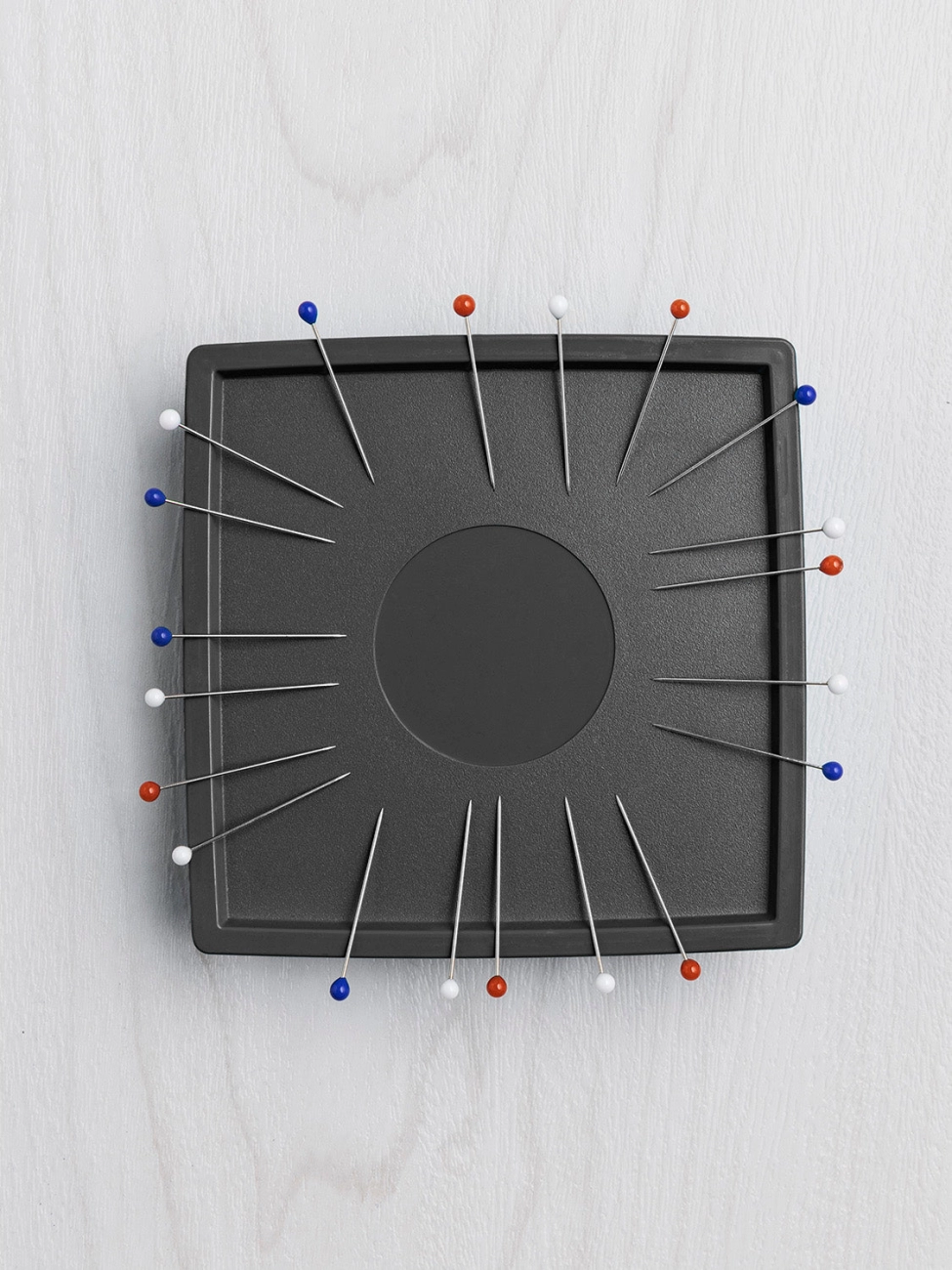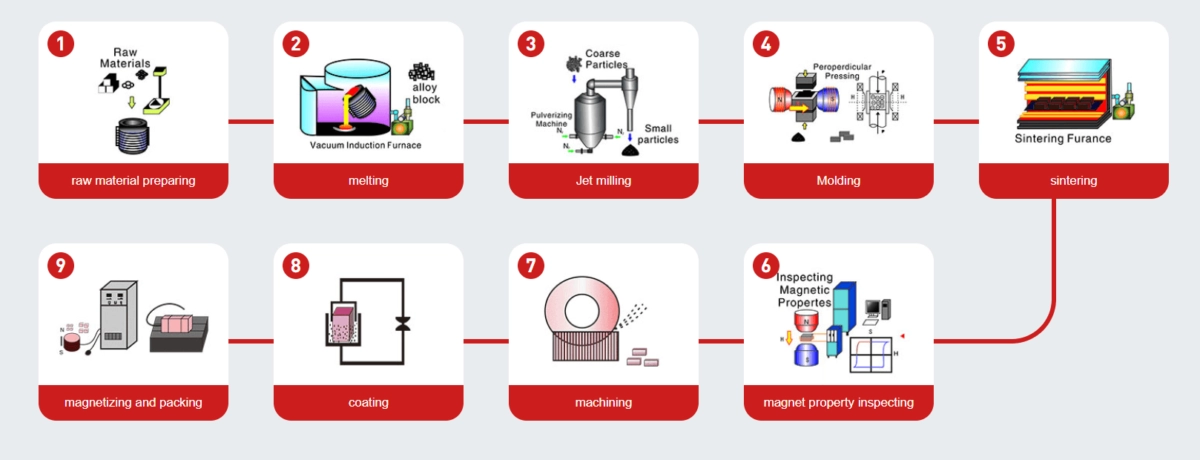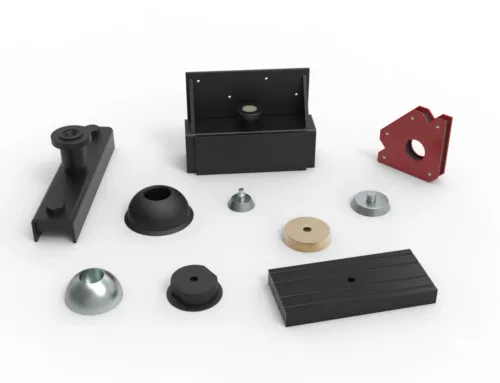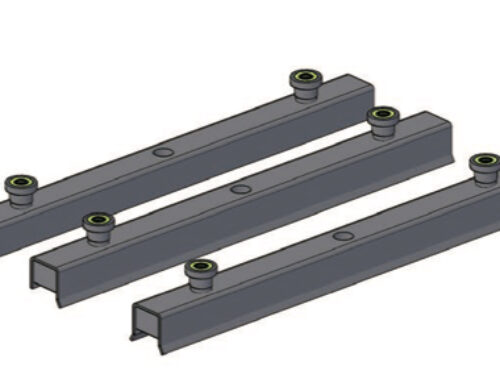Magnets for Sewing
Magnets for sewing are specialized magnetic tools designed to help organize, hold, and manage sewing needles, pins, and accessories more efficiently. Unlike traditional pin cushions or holders, these magnets use their magnetic force to securely keep needles and pins in place, reducing the risk of losing sharp objects and improving workspace organization.
Common types of sewing magnets include:
- Magnetic pincushions: Stylish cushions with built-in magnets that hold pins and needles on the surface for quick access.
- Magnetic pin holders: Compact magnetic trays or discs designed to grab sewing pins instantly without clutter.
- Magnetic seam guides: Magnets that attach to sewing machines or fabric to help maintain straight seams and precise measurements.
For sewing applications, magnets need to balance several key properties:
- Size: Small enough to be convenient but large enough to hold multiple pins securely.
- Strength: Strong enough to keep sharp needles and pins in place without damaging delicate fabrics.
- Coating: Rust-resistant or anti-corrosive coatings are essential to protect magnets from moisture and wear, ensuring durability over time.
Using the right magnet tailored for sewing makes all the difference in keeping your workspace safe, tidy, and efficient.
Advantages of Using Magnets for Sewing

Magnets for sewing bring several clear benefits that make them a smart choice for any sewing enthusiast. First, they improve safety by securely holding needles and pins in place, reducing the risk of accidental pricks or losing sharp items around your workspace. This is especially useful when you’re handling lots of small pins or needles during a project.
Magnets also boost efficiency. With a magnetic pin holder or pincushion, you get quick access and easy organization. No more digging through fabric or containers to find pins—just grab what you need, saving time and keeping your workflow smooth.
Durability is another plus. Unlike traditional pincushions that wear out or lose pins, magnetic holders are reusable and long-lasting. They don’t deform or collect lint, and a simple wipe keeps them clean.
Finally, magnets offer versatility. Beyond holding pins, you can use magnetic sewing tools for tasks like guiding fabric edges or even creating closures. Their adaptability means one magnet can serve multiple roles, which is ideal for different sewing projects.
NBAEM’s Solutions about Magnets for Sewing
NBAEM offers a wide range of magnets designed specifically for sewing needs. Their magnetic pincushions, needle holders, and pin organizers come with the right magnetic strength to securely hold even the smallest needles and pins without damaging fabric. Plus, they feature anti-rust coatings, making them durable and long-lasting even in humid or humid workshop environments.
What sets NBAEM magnets apart is their customization options. You can choose different shapes, sizes, and magnetic strengths to fit your exact sewing projects. They also use eco-friendly materials, which means you get reliable magnets without the environmental impact. Durability is a priority, so their products stand up well to daily use, whether you’re a hobbyist or run a sewing business.
Customers appreciate NBAEM’s attention to quality and the smooth finish of their magnets, which helps prevent fabric snags. Many sewing professionals report improved workspace organization and safety when switching to NBAEM’s magnetic pin holders and pincushions.
Whether you need a needle storage magnet or a magnetic clasp for clothing projects, NBAEM has solutions that combine strength, reliability, and safety—all backed by their expertise in magnetic materials.
How to Choose the Right Magnets for Sewing Needs
When picking magnets for sewing, keep these key factors in mind:
- Magnetic strength: Too weak won’t hold pins or needles securely; too strong can damage delicate fabrics or be hard to separate.
- Size and shape: Should fit your workspace and project—small magnets for needle storage, larger ones for magnetic pincushions or pin holders.
- Surface finish and coating: Look for magnets with smooth, rust-resistant coatings to protect your fabric and prevent magnet corrosion.
- Safety: Choose magnets with rounded edges or covered surfaces to avoid scratching or snagging fabric.
- Fabric compatibility: Some magnets can pull or stretch delicate materials—test on a fabric scrap first.
Magnet Types and Sewing Use Cases
| Magnet Type | Strength Level | Best Use Case | Notes |
|---|---|---|---|
| Neodymium magnets | Strong | Magnetic pincushions, pin holders | Powerful but handle with care |
| Ferrite magnets | Moderate | Seam guides, magnetic clasps | Budget-friendly, less strong |
Tips to Avoid Common Mistakes
- Avoid magnets that are too strong for delicate fabrics—they can leave marks or stretch fibers.
- Don’t place magnets near sewing machines or electronics to prevent interference.
- Test magnets on scrap fabric to check for any damage or unwanted effects before using them on your project.
Choosing the right magnet means balancing strength and gentleness to keep your sewing tools handy without risking your fabric. For more on magnet types and their properties, check out NBAEM’s ferrite magnet vs neodymium page.
DIY and Creative Uses of Magnets for Sewing
Magnets open up a lot of creative possibilities for sewing projects. You can use them for magnetic closures on bags and clothing, offering a sleek, easy-to-use alternative to buttons or snaps. These closures work well on purses, jackets, and even kids’ clothes, making dressing and access simpler.
How to Make a Magnetic Pincushion or Needle Holder
Here’s a quick way to DIY your own magnetic sewing tool:
- Choose your base – A small wooden box or a fabric pincushion stuffed tightly works great.
- Attach magnets – Glue strong, thin magnets (like neodymium discs) to the bottom or inside the pincushion.
- Cover carefully – Make sure magnets are covered with fabric or a protective layer to prevent scratches or rust.
- Use your pincushion – It holds needles and pins securely, so you can grab what you need fast without losing them.
Maintenance Tips for Magnets for Sewing
Keeping your magnets working well is easy if you follow these tips:
- Keep them dry to avoid rust, even if they have anti-rust coatings.
- Avoid extreme heat which can weaken magnetic strength.
- Clean gently with a soft cloth to remove any fabric lint or debris.
- Store separately when not in use to prevent magnets from attracting metal objects unexpectedly.
With just a little care, magnets will stay strong and reliable for all your sewing needs.
Where to Buy Quality Magnets for Sewing Why NBAEM

When looking for strong, reliable magnets for sewing, NBAEM stands out as a top choice. They offer high-quality magnetic materials that balance premium performance with affordable prices. Whether you need magnetic pincushions, sewing needle magnet holders, or magnetic pin holders, NBAEM’s range covers it all.
Their website is easy to navigate, providing clear ordering info and multiple contact options for customer support. One big plus is their ability to customize magnets based on your specific sewing needs—size, strength, or coating can be tailored to protect delicate fabrics or enhance durability.
NBAEM also supports bulk orders, making it perfect for sewing businesses and retailers across the United States looking to stock strong magnets for sewing projects. Plus, they offer international shipping, so whether you’re a hobbyist or a professional, getting the right magnets is hassle-free and reliable.
Frequently Asked Questions FAQs
Are magnets safe to use with all types of fabric
Most magnets for sewing are safe to use with common fabrics like cotton, polyester, and denim. However, very delicate or thin fabrics can sometimes get scratched or marked by rough magnet edges or strong magnetic pulls. To be safe, use magnets with smooth coatings and test on a small fabric piece first.
How strong magnets for sewing applications should be
For sewing tasks like holding needles, pins, or small tools, magnets with moderate strength work best. They should be strong enough to hold items securely without being so powerful that they risk damaging fabric or making it hard to remove pins. Usually, magnets with a pull force between 1 to 5 pounds fit most needs.
Can magnets damage sewing machines or other electronic devices
Modern sewing machines are generally safe around small magnets used in sewing accessories. Still, it’s smart to keep magnets away from sensitive electronic parts and screens to avoid any potential interference. Avoid placing magnets directly on or inside machines.
How to clean and maintain magnets for sewing
- Wipe magnets regularly with a soft, dry cloth to remove dust and metal residue.
- Avoid using harsh chemicals that can damage coatings.
- Store magnets in a dry place to prevent rust, especially those without anti-rust coatings.
- Keep magnets away from moisture and extreme temperatures for longer life.





Leave A Comment